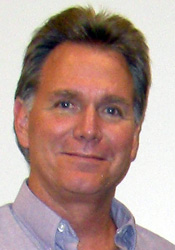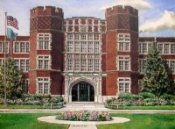The Challenge Index: One AVID Charter School Shines
 Rob Gira
Rob Gira  Tuesday, July 5, 2011 at 4:30PM
Tuesday, July 5, 2011 at 4:30PM  By: Rob Gira, Executive Vice President, AVID Center
By: Rob Gira, Executive Vice President, AVID Center
When Jay Mathews’ Challenge Index arrives annually, I always take note of the AVID high schools that make the list. In case you don’t know, years ago, Mathews devised a formula for ranking sites, based on AP, IB and other exams taken, divided by the number of graduating seniors. It became of means for some to rank U.S. high schools. While I don’t support that, I do believe that Mathews’ approach has helped push our high schools to open AP access.
Mathews has long contended--and there is some resiliency research as well as academic performance research that supports this--that just attempting the AP class and exam not only builds a strong academic portfolio, but also helps students develop confidence and strength. He doesn’t get any arguments from those of us in the AVID world.
In our landscape of over 2,000 high schools, we have a wide variety of schools and districts on the Challenge Index list, ranging from large urban environments to suburban and even small rural sites.
 Among the most interesting is Harding Charter Preparatory High School in Oklahoma City, Oklahoma. This is an urban charter, free and public, which draws students from throughout the city-- under 500 mostly poor students who choose to attend Harding because of its AP and AVID focus. Harding is 40% white, 40% African American, and 15% Hispanic.
Among the most interesting is Harding Charter Preparatory High School in Oklahoma City, Oklahoma. This is an urban charter, free and public, which draws students from throughout the city-- under 500 mostly poor students who choose to attend Harding because of its AP and AVID focus. Harding is 40% white, 40% African American, and 15% Hispanic.
Carole Kelley, one of the founding members of Harding and now Head of the School, was an AP U.S. History teacher from a mostly white, upper class school before she joined the charter.
Like many of us who have taught AP, she had some preconceived notions about who the appropriate AP students were. One student changed her mind.
“I had a young woman who was struggling in my AP class. She didn’t have the best preparation or background. I told her she could transfer to another class. She said, ‘Mrs. Kelley, you don’t understand; I need this class. I want to become a doctor. I will take a lower grade in here over an easier class.’ I kept her in the class and she got a high C. Today, she’s a doctor.”
All of the school’s founding members had an AP background. As they were preparing to open, Kelley discovered AVID. She approached me about a contract to implement. I tried to talk her out of it, she reminded me recently (good marketing strategy, Rob), believing that the school could not meet our implementation requirements. Luckily, Kelley ignored me and prevailed, realizing that AVID would provide the support necessary for all of Harding’s students to challenge AP courses.
“We get kids from everywhere in the city,” Kelley told me. “They’re mobile, and many don’t have the educational background. We had to have a way to provide academic support.”
Today, the school offers 16 different AP courses, having added AP Environmental Science last year. While students are not mandated to take the AP exam, most choose to do so. Last year, Harding graduated 83 seniors, and its students took 390 exams, with 171 achieving a score of 3 or better. That earned them a ranking of 68th on the Challenge Index, ahead of many high schools from upper income communities. This year, HCP moved up to 62nd place on the Challenge Index, just behind the highly regarded M.E. Debakey High School for Health Professions in Houston.
AVID has a schoolwide presence at Harding, with all students taking Cornell notes, keeping binders and agendas, and all staff are trained in AVID strategies.
This year, Harding is graduating 98 seniors, 21 from AVID. Over 80% will attend 4-year colleges and universities.
One of the AVID graduates is Mariah Arnold, who is also a Dell Scholar. As such, she received at $20,000 scholarship from the Michael and Susan Dell Foundation.
I recently spoke with Mariah, who took AVID for three years, to ask her about her experience in AVID at Harding. She stated that she joined AVID in her second semester sophomore year and the difference was immediate. Her first semester she was failing her on AP course, but with the help of AVID, she was able to finish with a B.
When asked what was it about AVID that helped, Mariah was quick to say – organization. “I’m far more organized than before. AVID helped me stay organized. It taught me what I needed to study versus just everything; tutorials helped with tests, it gave me focus.”
Mariah needed that extra focus as she took on three AP courses her junior year and four her senior year. She took her AVID skills and applied them to her other classes, using outlines and dividers for each. And she plans to take some of those skills with her to college. “The way we took notes, I’ll take that with me. I really like C-Notes and the way we used them to ask questions.”
What was it about her AVID teachers? “They kept me on topic, but they listened to the students, we could lead discussions based on our own interests.”
Mariah believes AVID is a great resource for students considering the elective. “If they stay in it, it will make them a lot more organized; it will help them keep their grades up; keep them more focused; and give them more time to fill out scholarship and applications.”
I hope the students at Harding follow in Mariah’s footsteps, as she is certainly headed for success!
Reader Comments